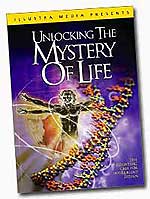 The moral crisis engulfing the modern world is built upon several false icons. These icons provide it with a philosophical foundation and purport to contradict age-old Christian wisdom. The claim that freedom is an absolute value, is one such icon that has led to legal protection for abortion and blasphemy. If these icons are dismantled, a laundry list of false conclusions is toppled with them.
The moral crisis engulfing the modern world is built upon several false icons. These icons provide it with a philosophical foundation and purport to contradict age-old Christian wisdom. The claim that freedom is an absolute value, is one such icon that has led to legal protection for abortion and blasphemy. If these icons are dismantled, a laundry list of false conclusions is toppled with them.
Darwin’s theory of evolution is one such icon. Revolutionary scientists use it to explain the limitless variety of creation, without admitting the existence of a Creator. Thus, God is effectively removed from the scientific world, and society feels justified in following suit.
However, Darwin’s theory is full of holes. Scientifically convinced of this fact, a number of scientists assembled in 1993 in Pajaro Dunes California to discuss the topic from their various fields. Their conclusions are presented in a fascinating documentary titled: Unlocking the Mystery of Life, recently released by Illustra Media.
Irreducible Complexity
One of the major contributors to the documentary is biochemist Michael Behe, whose theory of irreducible complexity demonstrates a flaw in Darwin’s concept of natural selection.
According to the theory of natural selection, life began from a primordial soup that covered the earth before living creatures did. Non-living molecules sprang forth from this soup, took on life and began replicating themselves.
As these life forms replicated, a small amount of them malfunctioned so that their offspring were different from themselves. This is commonly referred to as a mutation. Some of these mutants proved more suited for life, so they survived better, and lived to reproduce together with their fortunate malfunction. Through these minute changes, effected by random mutation, all the complexity and variety of creation purportedly sprang up without being directed by a Creator.
This theory hinges on the belief that every complex biological mechanism must have been developed by numerous small changes effected through mutation. This is true because a single mutation could never produce a fully functioning organ or system.
Thus, if any biological mechanism could be shown to be irreducibly complex, that is, arranged in such a way that it could not have developed through small incremental changes, it could not have developed through natural selection. Darwin affirmed this saying: “If it could be demonstrated that any complex organ existed which could not possibly have been formed by numerous, successive, slight modifications, my theory would absolutely break down.”1
Too Complex to Have Evolved
According to Dr. Behe, there are numerous biological systems which are irreducibly complex, especially at a microscopic level. The bacterial flagellum is a case in point. This single-cell organism propels itself using a whip-like tail, called a flagellum, that it spins at high speed (around 100,000 rpm).
The mechanism it uses to spin this flagellum is extraordinarily complex, resembling a boat’s outboard motor, complete with a drive shaft, bearing and U-joint. All-in-all this biological motor requires 20 separate biological components to be assembled in perfect order for the motor to function and the organism to thrive.
Since it is absurd to imagine that one single mutation could have produced this complex mechanism and there would be no biological advantage to a partially constructed one, the bacterial flagellum could not have developed through natural selection. Thus, in Darwin’s own words, his theory absolutely breaks down.
Shattering Icons
Unlocking the Mystery of Life explains this and much more in a way that is easy-to-grasp, complete with diagrams, microscopic video footage and computer animation. Its presentation of the complex way in which proteins are constructed inside the cell is another fascinating highlight of the film.
Thus, the TFP highly recommends Unlocking the Mystery of Life for audiences both young and old. It serves as an effective tool to shatter a Revolutionary icon. Toppling these icons one-by-one undermines the Revolution’s2 very foundation and reestablishes the link to a Christian past, the future’s only true hope.
Footnotes
- As quoted by Michael Behe, “Evidence for Intelligent Design from Biochemistry,” August 10, 1996, http://www.arn.org/docs/behe/mb_idfrombiochemistry.htm.
- The word Revolution used here refers to a 500-year-old crisis in Christian civilization as defined by Prof. Plinio Corrêa de Oliveira in the book Revolution and Counter-revolution.
